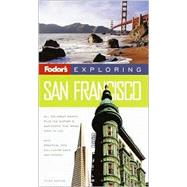
| How to use this book | p. 4 |
| Contents pages | p. 5 |
| My San Francisco | p. 8 |
| San Francisco is | p. 9 |
| A melting pot | p. 10 |
| Physical pursuits | p. 12 |
| Politics | p. 14 |
| Film | p. 16 |
| Architecture | p. 18 |
| Environmental concerns | p. 20 |
| Homelessness | p. 22 |
| Festivals and events | p. 24 |
| San Francisco Was | p. 27 |
| Formed | p. 28 |
| Native inhabitants | p. 29 |
| Founded | p. 30 |
| The Gold Rush | p. 32 |
| Growing pains | p. 34 |
| Characters | p. 36 |
| Destroyed | p. 38 |
| Rebuilt and prosperous | p. 40 |
| Counterculture | p. 42 |
| A-Z | |
| Area overview | p. 44 |
| Itineraries | p. 50 |
| A-Z | p. 54 |
| Excursions | p. 180 |
| Accommodations | p. 210 |
| Food and drink | p. 214 |
| Shopping | p. 224 |
| Nightlife | p. 231 |
| Children's San Francisco | p. 242 |
| San Francisco for free | p. 244 |
| San Francisco for the rich | p. 246 |
| Focus On | |
| Views | p. 52 |
| Berkeley campus | p. 60 |
| Gay and lesbian life | p. 70 |
| The Chinese | p. 76 |
| Bars | p. 84 |
| Boat trips | p. 89 |
| Guided walking tours | p. 94 |
| The Irish | p. 97 |
| Parks | p. 104 |
| The Flower Power era | p. 110 |
| The Asian Art Museum | p. 122 |
| The Latino population | p. 126 |
| Afternoon tea | p. 132 |
| Cafes | p. 138 |
| Oakland Museum | p. 142 |
| Literary landmarks | p. 146 |
| San Francisco media | p. 154 |
| Sports | p. 164 |
| Adolph Sutro | p. 171 |
| Coit Tower | p. 174 |
| Walks | |
| Chinatown | p. 73 |
| Financial District | p. 88 |
| Fisherman's Wharf | p. 91 |
| Haight-Ashbury | p. 107 |
| Mission District | p. 125 |
| North Beach | p. 135 |
| Drives | |
| Gold Country and Lake Tahoe | p. 184 |
| Marin County | p. 190 |
| The Monterey Peninsula | p. 192 |
| The northern coast | p. 196 |
| The San Francisco Peninsula | p. 200 |
| The Wine Country | p. 204 |
| Travel Facts | p. 247 |
| Arriving and departing | p. 248 |
| Essential facts | p. 250 |
| Getting around | p. 252 |
| Communications | p. 258 |
| Emergencies | p. 260 |
| Other information | p. 262 |
| Tours and tourist offices | p. 266 |
| Accommodations and Restaurants | p. 267 |
| Index | p. 282 |
| Picture credits and contributors | p. 288 |
| Table of Contents provided by Syndetics. All Rights Reserved. |
The New copy of this book will include any supplemental materials advertised. Please check the title of the book to determine if it should include any access cards, study guides, lab manuals, CDs, etc.
The Used, Rental and eBook copies of this book are not guaranteed to include any supplemental materials. Typically, only the book itself is included. This is true even if the title states it includes any access cards, study guides, lab manuals, CDs, etc.
Excerpted from San Francisco by Fodor's Travel Publications, Inc. Staff
All rights reserved by the original copyright owners. Excerpts are provided for display purposes only and may not be reproduced, reprinted or distributed without the written permission of the publisher.